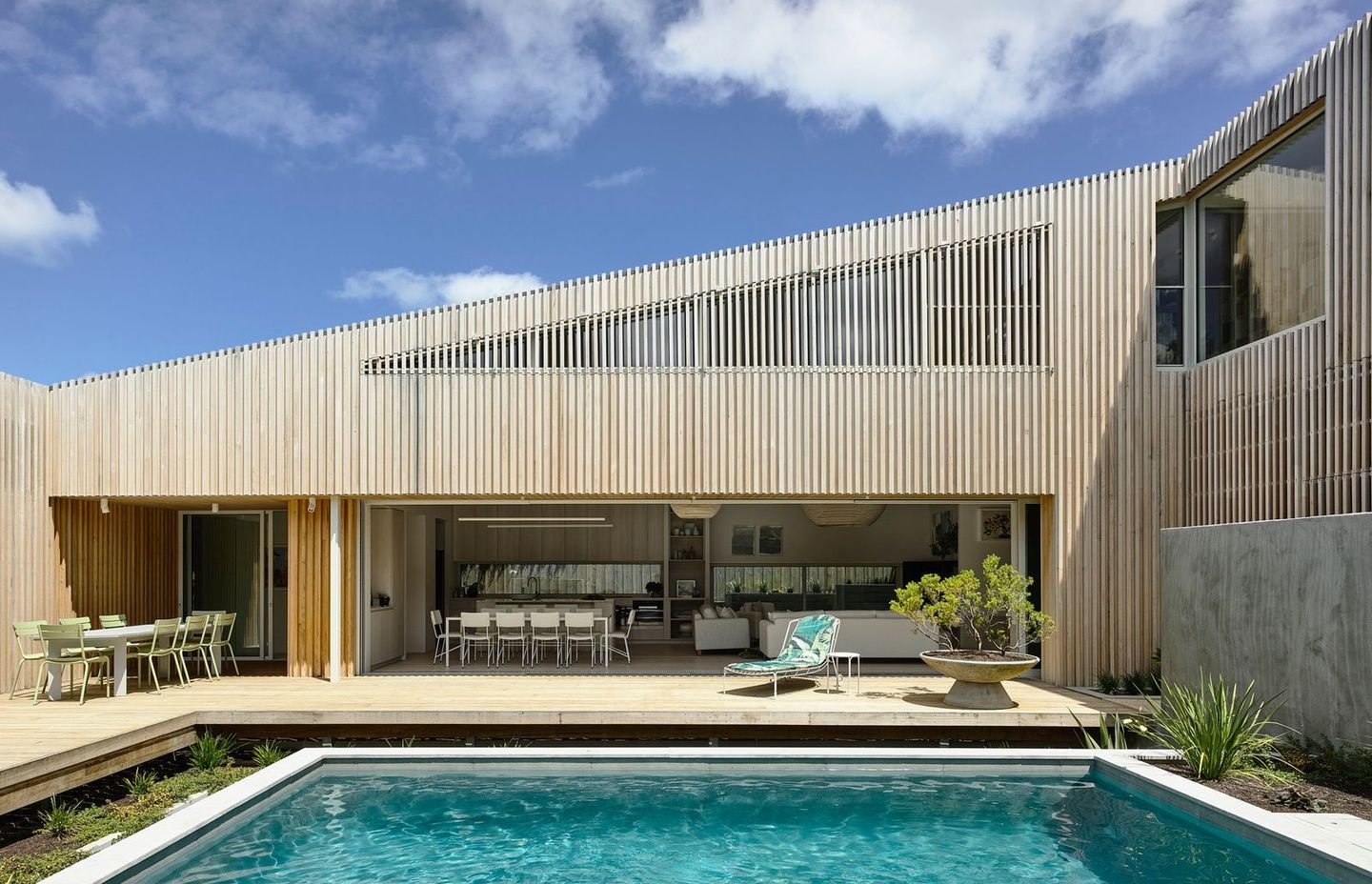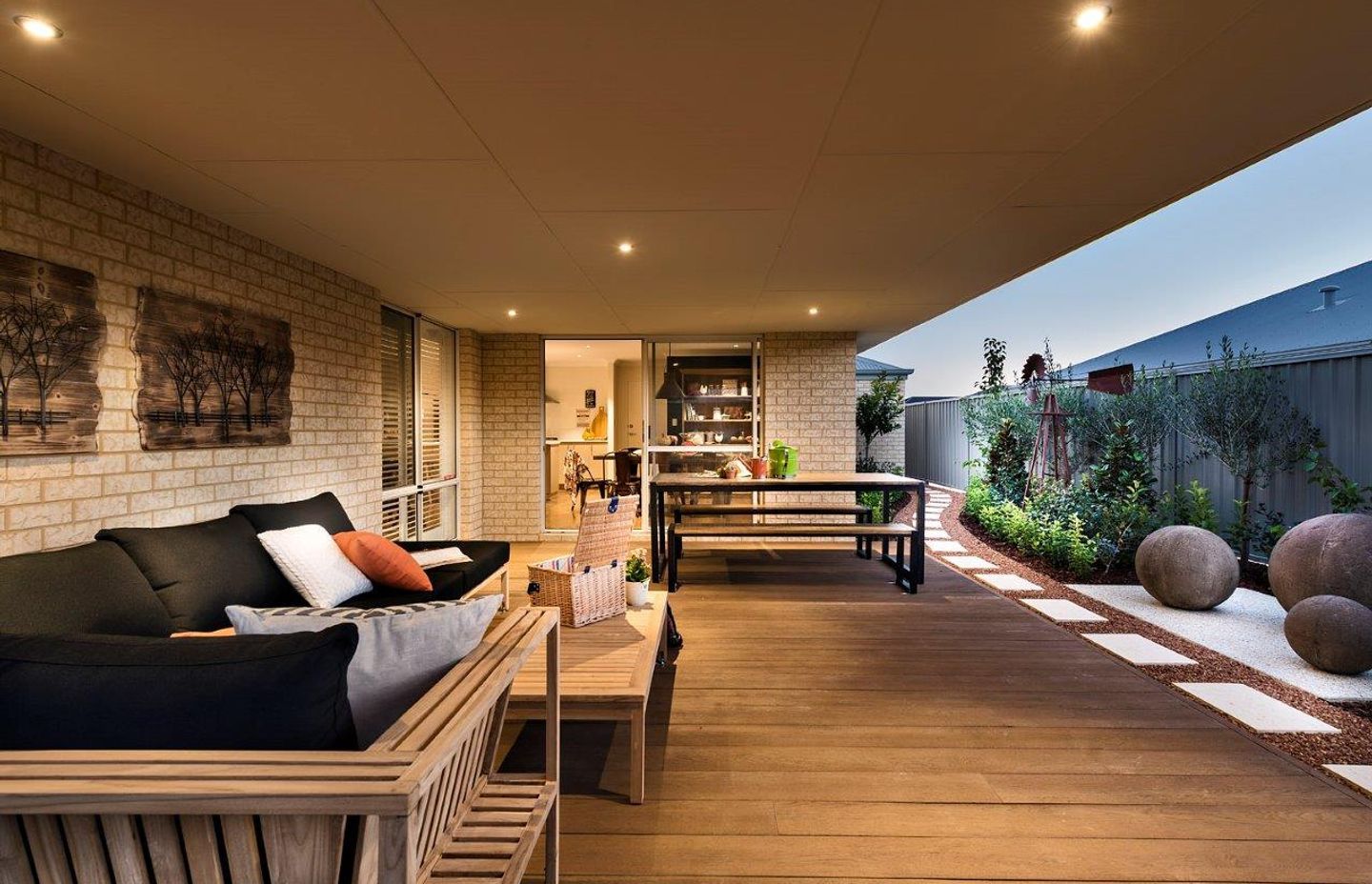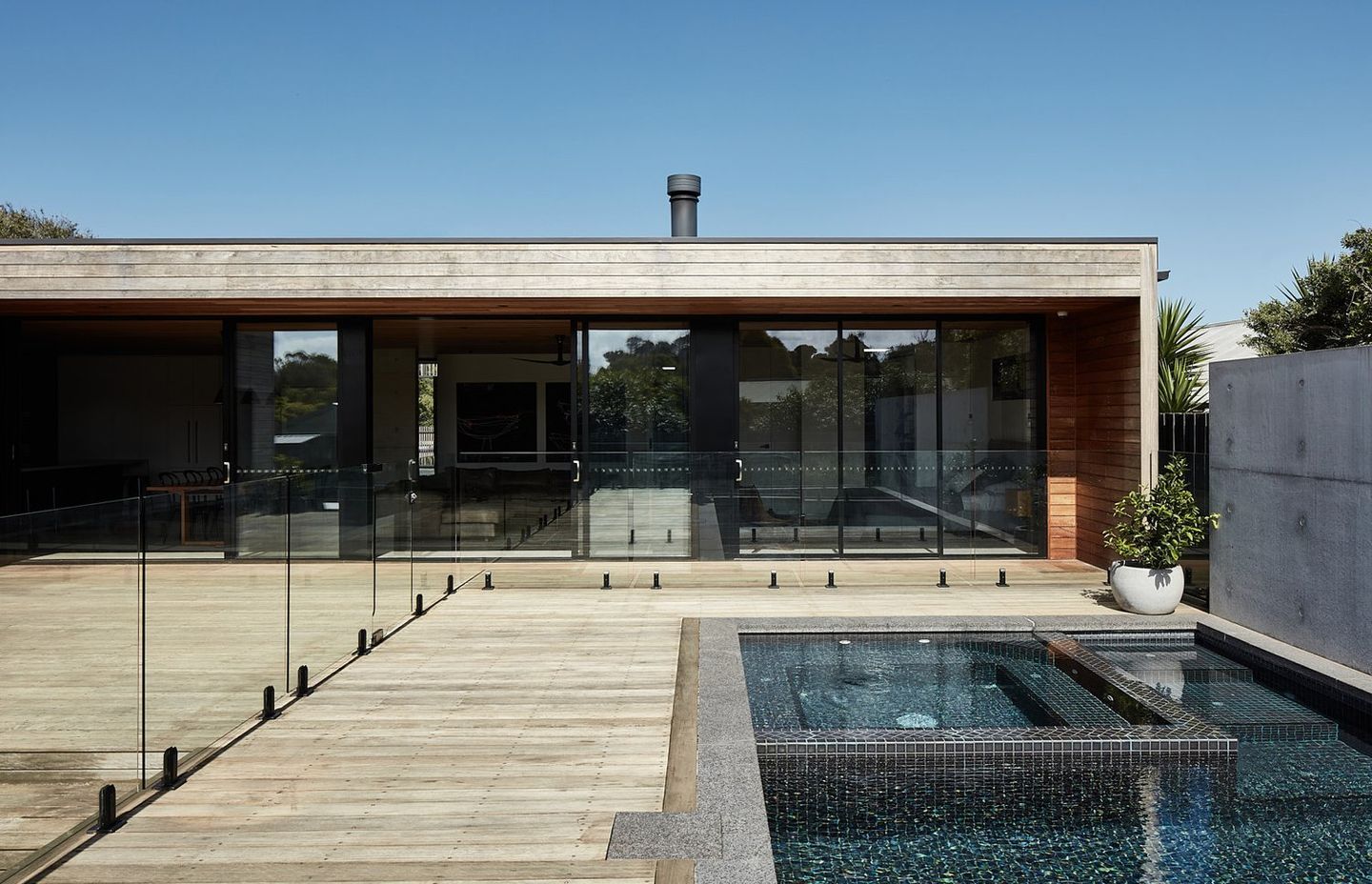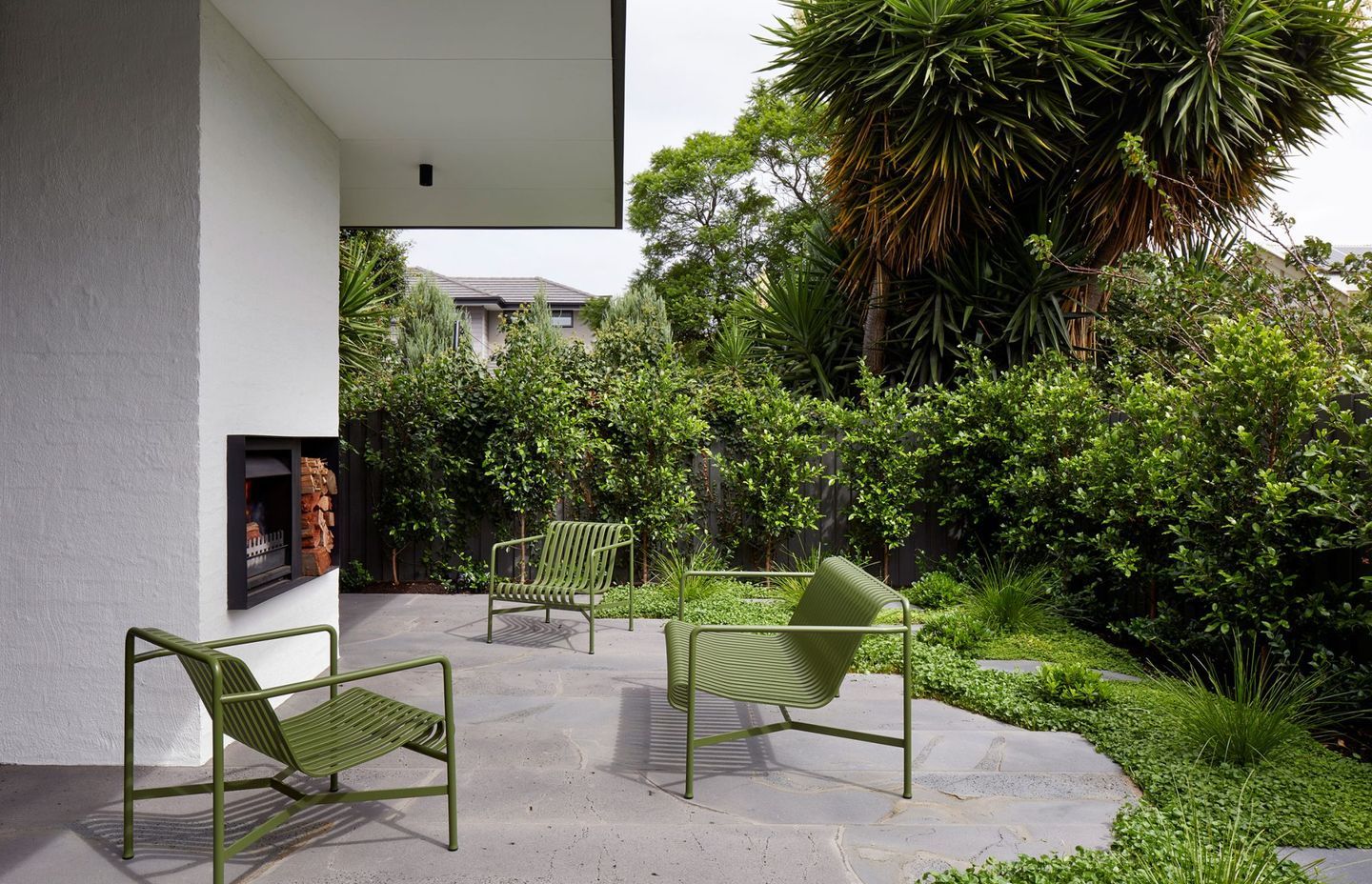How to select the best decking material for your home
Written by
08 January 2023
•
4 min read

A place for respite and recreation, the right deck serves to extend a home’s useable area and can play host to an in-ground pool, act as a place to entertain guests, and foster a strong indoor-outdoor connection. Crucial to creating a deck that suits your needs is selecting the right decking material, with the best decking materials working to enhance your home both aesthetically and functionally.
When selecting the best decking material for your home, it’s essential to consider the amount of maintenance and upkeep required, climate and geographical location, and any region-specific regulations. Whether you’re going for contemporary chic or in search of a classically beautiful outdoor space, these are the best decking materials to consider.
Read more: 7 spaces that promote a seamless indoor-outdoor flow
Pressure-treated wood
One of the most popular types of wood decking used today, pressure-treated wood is chemically treated to deter insects, prevent rot, and withstand mould and mildew. More durable than natural hardwood, pressure-treated lumber is robust and boasts excellent longevity. Highly affordable and readily available, it’s the go-to choice for many homeowners.
Previously, the chemicals used to create pressure-treated wood were an issue, however contemporary products use chemicals that are relatively safe. That being said, care should be taken (and masks worn) when sawing or drilling pressure-treated wood in order to avoid inhaling chemicals. Pressure-treated wood also requires careful maintenance to prevent splitting, warping or cracking.
Composite decking
Composite decking is a manmade material manufactured from a combination of materials; typically recycled wood fibres and plastic. Eco-friendly and visually pleasing, composite decking is more durable than its natural timber counterpart and has emerged as one of the fastest-growing decking options. For those with pools or outdoor spas, there’s also the option to select a non-slip composite decking, which can be advantageous from a safety perspective.
As it’s an artificially treated material, composite decking is immune to splintering and warping and doesn’t require maintenance like staining or oiling. Composite decking is more expensive than natural timber, however in the long run, time and money on maintenance are saved.
Brands to consider: Mood Timber, Millboard Decking
Timber decking
Natural timber decking is a major part of the Australian residential built landscape and an iconic choice when it comes to aesthetics. Australian hardwoods such as jarrah, spotted gum, and merbau are popular choices for their distinctive finishes as well as their fire resistance and durability. However, these Australian hardwoods come with a not-insignificant price tag. Treated pine offers a more affordable natural alternative to hardwood. While it doesn’t have the same aesthetic appeal, this can be remedied with the right decking stain.
Brands to consider: Millboard Decking, Ironwood Timber, Mood Timber, Enoak, Woodos
Bluestone
Australian bluestone can make for a striking decking material, integrating well with traditional and contemporary architecture alike. Its non-slip properties make it a good choice for wet areas, with bluestone often used in backyards with pools or in regions prone to rain. The primary drawback to bluestone is its susceptibility to getting rather hot under strong sun exposure.
Brands to consider: BAMSTONE
Read more: Using natural Australian bluestone to elevate your outdoor space
Aluminium decking
Running across a metal deck in the middle of summer might be a startling thought, however aluminium decking has emerged as a viable alternative to traditional wood decking. Aluminium decking actually allows heat to pass through (while timber and plastic retain it), distributing it evenly across the surface of the deck and preventing any area from becoming too hot – all in all, it’s a comfortable material underfoot.
Aluminium decking has become a popular option with homeowners who desire a durable, low-maintenance decking material. Available in a variety of natural and contemporary styles, aluminium decking is fire-resistant and durable, making it a good choice for areas prone to bushfires and strong winds, as well as coastal areas. However, it doesn’t come cheap; aluminium decking is currently the most expensive decking option on the market.
Brands to consider: DECO Australia, Mood Timber
Explore decking options and find the right professional for your next outdoor project on ArchiPro.




